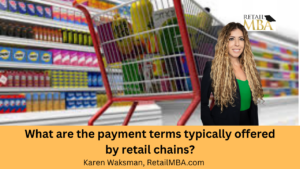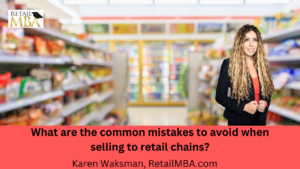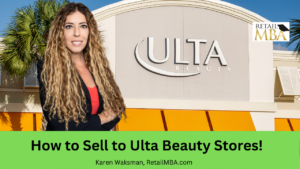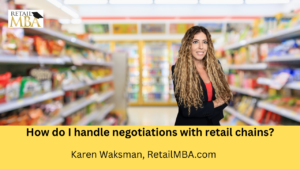SKU

How SKUs Can Help Your Store
SKUs that work effectively must communicate product attributes clearly and succinctly, such as using only one to three characters for each attribute, creating acronyms or abbreviated terms (such as “BLK”) or using colors and sizes easily identifiable to consumers.
This allows e-commerce and multichannel integrations to be simplified by giving all systems access to one identifier; making it simpler for warehouse staff to find orders quickly.
Product Information
If your store sells multiple product variations, it is ideal to include more specific attributes in your SKU format. For example, if your jacket comes in various sizes and colors, adding color codes to its SKU can help your warehouse team more easily find it when shipping orders – an SKU like “JAC-10-BL” may be much simpler to read than its variants like “JAC-10-BL-W” or simply “JAC-10-BL”. Furthermore, track details about product characteristics like season, size, style or brand as well.
Attributing all your products with similar attributes is an effective way to decrease stock-outs, enhance customer satisfaction, and drive sales growth. For instance, using SKUs that include details on processor type can help identify which models are popular among your target market and which need replacement; using this data in marketing campaigns such as cross-promotions or personalized product suggestions could increase customer retention and sales.
One of the greatest challenges when creating a SKU is organizing all its attributes in an orderly manner. To use Amazon as an example, large retailers with millions of products usually employ the Cascade System; it involves listing key characteristics first followed by more granular characteristics like color size brand etc. Amazon uses this technique when listing SKUs that use this system such as Electronics, Apparel, Headphones, etc. as its top level SKU.
Once you have decided upon an SKU format, make sure that it remains constant as your inventory increases. A variation between SKUs can create confusion for employees who use various platforms and systems; furthermore, standardizing can save both time and money when purchasing shipping labels; plus it will reduce errors that result in out-of-stock items or incorrect orders for your customers.
As soon as your retail business begins, SKUs should become part of its routine if possible; using them can help organize inventory better and reduce out-of-stock scenarios that frustrate customers. Plus, using SKUs makes expanding inventory simpler in the future!
Inventory Management
No matter the size or nature of your inventory, tracking each item accurately is crucial for keeping track of its existence and ordering more as soon as it runs out. Doing this prevents ghost inventory and ensures merchandise doesn’t run dry!
SKUs can help your business identify product variants more easily – for employees or machines alike – through their unique code. SKU codes can also help a business create its own codes as opposed to Global Trade Item Numbers/Universal Product Codes which are standardized by GS1.
An effective SKU system can also help forecast sales and demand, personalize which products appear on online storefronts for shoppers, and optimize inventory levels in both stores and warehouses. Tracking characteristics, collecting historical data, analyzing market trends and planning future inventory levels requires appropriate inventory management software.
Inventory management software allows businesses to view real-time inventory levels for every SKU in real-time, track performance, analyze sales data, and reduce human error throughout the supply chain. It is particularly helpful for Direct to Consumer (DTC) brands that manage large inventories while carrying out complex fulfillment processes.
When selecting an inventory management system for your business, it’s key to find one that can accommodate its specific requirements while being compatible with other software systems. For instance, using a point of sale (POS) system linked with inventory management software allows it to automatically sync stock quantities as you sell, return or exchange items at any location – saving both time and ensuring both online and in-store inventory remains accurate.
Many retailers include in their inventory management software an algorithm to calculate an optimal reorder point for every SKU, using sales history data as the basis of its calculation. Many apps will automate this process for maximum efficiency in keeping warehouse and retail store stock well stocked at all times.
Customer Service
Customer service reps find that SKU numbers make helping their customers easier. Instead of having to ask for product descriptions from customers, SKU barcode scanning allows customer service reps to quickly retrieve detailed information regarding an individual item quickly and accurately – providing them with quick answers when answering customer inquiries quickly and correctly.
SKUs (stock keeping units) are made up of letters and numbers; their exact format depends on each business. While SKUs may contain special characters (such as letters or numbers that make the number unique to it), typically these short, easy-to-read labels contain eight to 12 characters for easy reading and understanding.
SKUs are typically linked with Universal Product Code (UPC) barcodes that can be scanned at checkout to expedite purchasing processes and help speed up buying times. While UPCs are unique for each product, SKUs can remain constant across sellers since they’re used exclusively for internal tracking purposes.
SKUs can also be displayed prominently on your storefront with a barcode to distinguish your products from competitors’ offerings. When creating SKUs, be mindful to avoid special characters or symbols that could mislead customers such as an email address. In particular, be wary of using letters like ‘@’ as these could easily be mistaken as email addresses while symbols like ‘/’ may cause user confusion as well.
Marketing
SKUs can be invaluable not only in inventory management and sales analysis, but also store marketing. A SKU may guide customers towards products with similar features or characteristics – for instance if someone buys lipstick from one vendor it might suggest lip gloss or eyeshadow from another one – increasing overall sales while building customer loyalty for your company.
SKUs also help retailers anticipate reorder points for popular products to avoid selling out before it’s time to order more, creating an overall positive shopping experience for customers and solidifying themselves as reliable sources of high-quality goods – assuring shoppers they will always have what’s in demand in stock.
Formatting a SKU is entirely up to you, though ideally it should use an easy system that your employees can understand. Avoid letters that look similar to numbers such as i and l as these could easily become confused with one another or the number 1. Uppercase letters also make SKUs easier for employees who might glance quickly at them on receipts or databases.
Once you’ve created an SKU format that suits your business needs, it should become the default for all product records within your inventory management system. It should be logical and include all pertinent information necessary to identify each item in a way that makes sense – such as brand, style, size and color details. You may wish to include additional attributes such as category/subcategory details as you go; just start with what matters first before expanding when necessary.
SKUs also make for invaluable profit reports by enabling retailers to develop accurate profitability analyses. By comparing actual sales against expected values of each item sold, it becomes easy to see which are making and losing money, providing opportunities to enhance operations while cutting waste – this process is known as SKU rationalisation – an indispensable asset in retail operations.
Step-by-step training on how to sell to retail chains!
We explain exactly how to do that and how to get started today. I’ve taught over 100,000 of companies over the years across the globe on how to get your products to the stores. And so we’re here to support you. Or please subscribe to our Youtube channel and or be on the lookout for additional training that we create.
We are here to expedite the process of generating revenue with your physical products and that’s what we’re all about. Take a look at our advanced training, live events, certification programs and so much more.
In this training, I will discuss some of the things to think about when approaching a retailer to sell your products and become a vendor. Hope it helps! 🙂
Karen Waksman,
Retail MBA
Questions? Contact Us!
1-855-Retail-2 (Call or Text)
Email: info@retailmba.com
Retail MBA provides a step-by-step formula on How to Sell to Major Retailers, Online Retailers, Smaller Retailers, Catalogs and More. No Experience Required! These solutions continue to convert for clients year-over-year! These are Time-Tested and Proven Strategies that we utilize ourselves when going after stores! Everything we teach, we test. Want access to these formulas? ANY one of our programs and coaching systems gives you access to them now. With that said…
Here are 5 Easy Ways to Work with Us:
1) Free Training – If You Would Like to Join Our Next FREE Webinar Training Called “Retail Chain Store Secrets – How to Sell to Major Retail Chains. No Experience Required” Then Sign Up NOW To Learn All About Selling into Retail Chains By Clicking Here!
2) Retail MBA Year Long Coaching and Training System – Our Year Long Coaching and Training System with Karen Waksman is POWERFUL! This is our most popular training and coaching system! We walk you through how to approach, pitch and sell to retail chains and we coach you along the way! Join us by Clicking Here!
3) Masterclass Intensives – Want to Join our Next 4 Week Elite Retail MBA Masterclass Intensive? These Intensives Are EPIC for people who Love Fast Paced Learning – Homework, Retail Coaching, Developing Your Strategy, Buyers Contacts and More! These Events Are Held Every Quarter. Join us by Clicking Here!
4) Done-for-You Program – If You Want Karen Waksman and Her Team to Reach Out to Your Top Dream Retail Chains On Your Behalf – And You Have a Retail-Ready Product, Check Out our Epic Done-For-You Service by Clicking Here!
5) In Person Events – If You Want to Learn LIVE and Meet Karen Waksman in Person at Our Next “America’s Next Retail Product: LIVE Event with Other Like-Minded Individuals in Beautiful San Diego, CA! We Would LOVE to Have You Join Us by Clicking Here!

Check Out Our Additional Blog Posts Here:

Retail Terms
Retail Terms – What are the payment terms typically offered by retail chains? Click Here to Learn More!

Retail Vendor
Retail Vendor – What are the common mistakes to avoid when selling to retail chains? Click Here to Learn More!

How to Sell Your Holiday Products to Retail Chains
New Training on How to Sell Your Holiday Products to Retail Chains


Ulta Beauty Vendor
Ulta Beauty Vendor – How to Sell to Ulta Beauty Stores. Click Here to Learn More!

Retail Strategy
Retail Strategy – How do I handle negotiations with retail chains? Click Here to Learn More!

